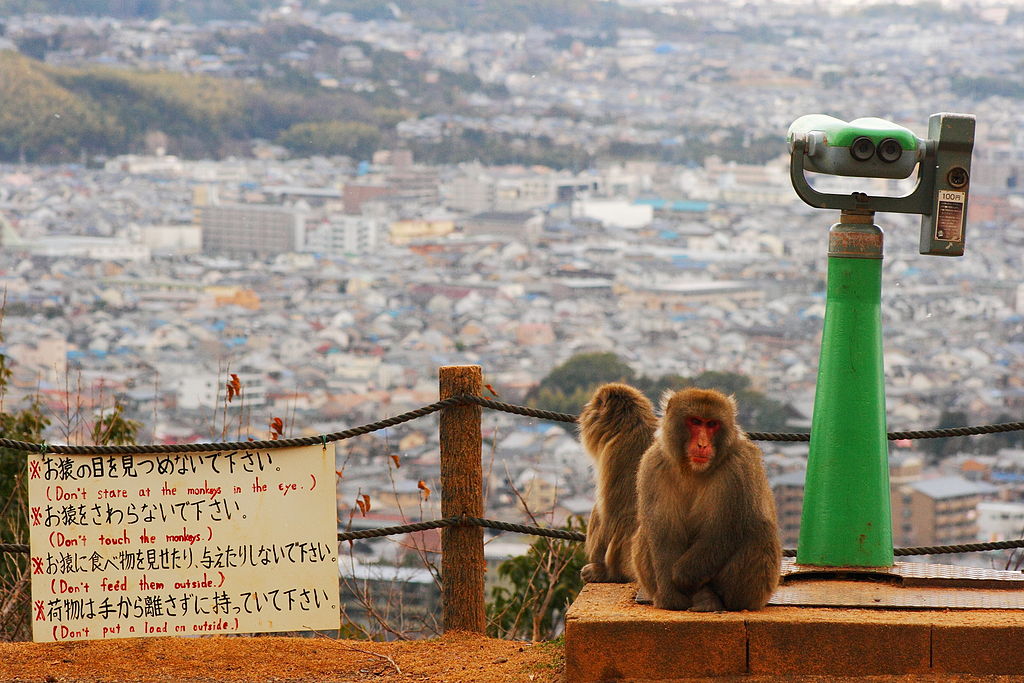Mar 27, 2023
Great Places to Spot Wildlife in Kansai
Japan may have a reputation as being a country filled with ultra-modern built-up urban environments flashing neon signs at you, but it also has an abundance of natural beauty. From large national parks to river wetlands to mountains to beaches, there is plenty of nature to savor in Japan. This includes the Kansai region and some of the country’s spectacular preserved landscapes. If you fancy trying to spot a few wild creatures outside the confines of a zoo, farm, or aquarium, head along to these spots.
Nara Park
Nara Park is the most famous place in Kansai for animal interaction outside of commercial zoos. The reason is the 1,200 or so deer that roam freely around the park. These creatures have made Nara Park a big tourist attraction. You can get as close as you like to the deer and even feed them rice crackers sold on-site. However, be careful not to scare or aggravate them. The park also contains temples, beautiful gardens, a giant bronze Buddha statue, and many squirrels. It’s easy to reach, too, just a 5-minute walk from Kintetsu Nara station.
Website: https://www.pref.nara.jp/1713.htm (in Japanese)
Arishiyama Monkey Park
This park is a bit of a trek – around a 20-minute hike into the mountains on the outskirts of Kyoto – but it’s well worth it if you want to get up close with monkeys. Arashiyama Monkey Park contains around 120 different breeds of monkeys, many of them macaque monkeys, who roam around freely and interact with visitors. There is a fenced-in area where feeding the creatures nuts and other snacks is safe. If you’re lucky, you will also see other species in the park, such as deer and wild birds.
Website: http://www.monkeypark.jp/eng-index.html
Lake Biwa
Located in the Shiga prefecture, Lake Biwa is one of Japan’s oldest and largest lakes. Believed to be around 4 million years old, it is a UNESCO-preserved site believed to contain a diverse ecosystem of over 1,000 different species. These include the giant catfish, which can grow to over one meter in length, and waterbirds such as the grebe. Because of this, the lake is a popular venue for wildlife lovers. You can also find sports providers offering sessions in watersports, such as stand-up paddling (SUP) and kayaking.
Website: https://en.biwako-visitors.jp/
Hyogo Park and the Hachigoro Toshima Wetlands
These spaces are part of a preservation project to protect the Oriental White Stork (konotori) that started disappearing from Japan’s natural habitats in the 20th century. Hyogo Park opened in 1999 as a specialized research institution focusing on reintroducing the stork to wild spaces. It has a museum and information center where visitors can learn about the bird’s plight. The nearby Hachigoro Toshima Wetlands are converted rice fields designed to create a habitat for the storks. A nearby raised observation area is where you can view the creatures and some eye-catching local scenery.
Website: https://toyooka-city.jp/stork-viewing/
Soji-ji Temple
This temple in Osaka has a history linked to turtles. Legend has it that the temple originated following an encounter where a monk called Takafusa saved a turtle. The turtle then returned the favor by saving Takafusa’s son from drowning. This led to the statue of Kannon, the Buddhist goddess of mercy, riding a turtle that is on display on the temple grounds. There is also a pond on the temple grounds where you can sometimes see turtle species if you’re lucky.
Website: http://sojiji.or.jp/ (in Japanese)
Antti T. Nissinen, CC BY 2.0, via Wikimedia Commons


About the author